 Nuclear Waste Partnership (NWP) President and Project Manager Sean Dunagan, center, helps unfurl the Voluntary Protection Program (VPP) Star site flag during a brief ceremony at the Waste Isolation Pilot Plant (WIPP) in late June. Also pictured, from left, are Paulette Henry, WIPP VPP Committee member; Rick Fuentes, United Steel Workers Union president; Tim Taulbee, NWP environment, safety and health manager; and Frank Methola, United Government Security Officers Union president.
EM contractors at the Waste Isolation Pilot Plant (WIPP) and Savannah River Site (SRS) were recently awarded Star status for safety and health advances through the DOE’s Voluntary Protection Program (VPP).
“This is a very significant milestone,” DOE Carlsbad Field Office Acting Manager Greg Sosson said of Nuclear Waste Partnership (NWP), the WIPP management and operations contractor. “I’m looking forward to the continued success at WIPP that is enabled by the behaviors needed to attain this recognition.”
Working through cooperative efforts among labor, management, and government at DOE contractor sites, the VPP promotes improved health and safety performance. The Star status is for DOE contractors whose injury rates meet the DOE standard of 50 percent below industry average, who perform mentoring and outreach activities, and exemplify management leadership, employee involvement, worksite analysis, hazard prevention and control, and safety and health training.
After separate fire and radiological events in 2014, WIPP implemented a variety of safety improvements and received VPP Merit status in 2015. Last year, a DOE VPP team spoke highly of the changes that had been made, noting that it would return to WIPP in 2020 to ensure their permanence. The team visited again in January and recommended Star status for the site.
“Safety improvements that began in 2018 have matured, and Nuclear Waste Partnership has demonstrated its commitment to making those improvements permanent and earned the workers’ trust,” the team’s report states.
“We stand ready to assist you as you continue in your pursuit of excellence,” DOE Associate Under Secretary for Environment, Health, Safety and Security Matthew Moury wrote in the Star status notification letter to the WIPP contractor.
“This is an impressive accomplishment and milestone,” NWP President and Project Manager Sean Dunagan said. “I would like to thank our employees for making this achievement possible through their dedication to ensuring that safety is No. 1 at WIPP.”
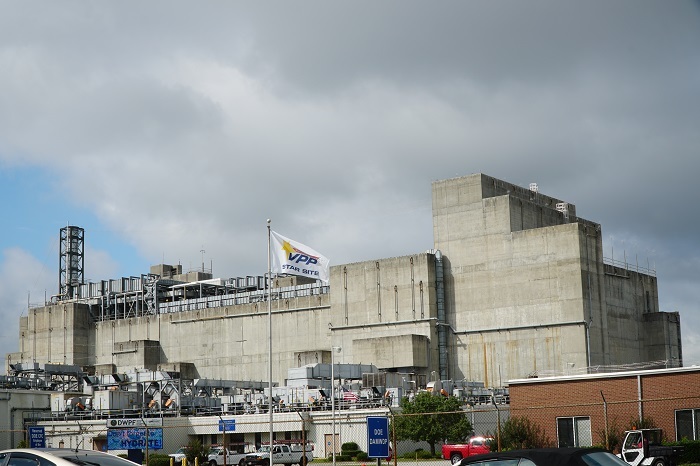 The Voluntary Protection Program (VPP) flag continues to fly in front of the Savannah River Site’s Defense Waste Processing Facility, operated by Savannah River Remediation.
In the announcement to Savannah River Remediation (SRR), EM’s liquid waste contractor at SRS, Moury congratulated employees ”for your pursuit of excellence in health and safety and your efforts to retain Star status in the Department of Energy’s Voluntary Protection Program.”
The DOE-VPP team completed its two-week onsite review of SRR in February.
“After reviewing our programs, talking to our personnel, and watching work being completed, the VPP team reached the conclusion that SRR should be recertified as a Star site,” said Mark Schmitz, SRR chief operating officer and deputy project manager. “Every team member takes our core value of safety to heart and contributes to that success.”
For more information on DOE’s VPP Program, click here.
-Contributors: Colleen Hart, Victoria Parker
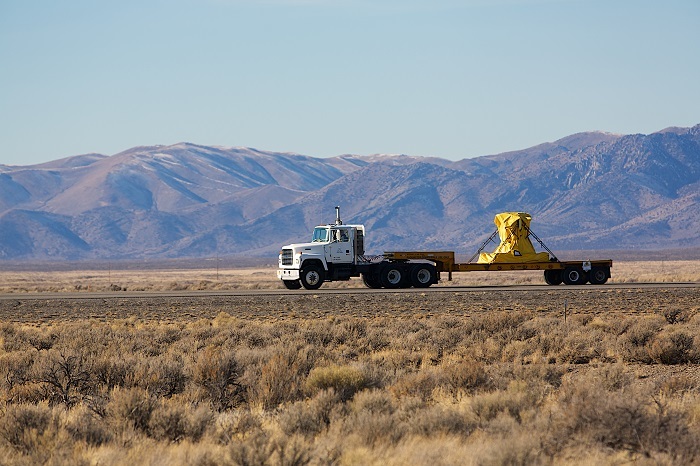 A shipment of spent nuclear fuel travels from the Advanced Test Reactor Complex to the Idaho Nuclear Technology and Engineering Center.
IDAHO FALLS, Idaho – EM and cleanup contractor Fluor Idaho recently partnered with Battelle Energy Alliance (BEA) to perform transfers of spent nuclear fuel at the Idaho National Laboratory (INL) Site.
The shipments from the Advanced Test Reactor (ATR) Complex to the Idaho Nuclear Technology and Engineering Center (INTEC) allow BEA, which manages INL, to prepare for mission-critical work at the ATR.
Russ Cottam, Fluor Idaho spent nuclear fuel projects manager, said the shipments have been conducted safely and with a minimum staff to ensure social distancing due to the COVID-19 pandemic. The fuel was transferred from wet storage at the ATR canal to the Chemical Processing Plant (CPP)-603 spent nuclear fuel storage facility, where it was placed in dry storage.
“We exceeded our goal of 10 shipments this calendar year and completed the scope ahead of schedule," Cottam said.
Fluor Idaho’s spent nuclear fuel program maximized CPP-603’s unused space so the program can transfer the remaining fuel from the CPP-666 basin to dry storage by 2023 to comply with an Idaho Settlement Agreement milestone.
New fuel buckets, fabricated by Fluor Idaho, allow 50 percent more ATR fuel elements to be stacked in fuel canisters at CPP-603. The new buckets are segmented differently than the previous ones, allowing fuel handlers to stack fuel assemblies in different configurations, resulting in more assemblies being loaded in the same amount of space.
With the new fuel buckets, CPP-603 can continue to accept the ATR fuel directly into dry storage for at least 10 more years.
-Contributor: Erik Simpson
 Workers prepare equipment removed from a recently demolished contaminated structure at the Savannah River Site to be permanently encapsulated within cement-like grout.
AIKEN, S.C. – EM crews have demolished two small structures formerly used to measure the flow of hazardous wastewater and obtain sample data within a process sewer line at the Savannah River Site (SRS).
Not much larger than a walk-in closet, each unit was built over an eight- to 12-foot-deep concrete pit, providing a sample point to the sewer line.
The closure task team placed contaminated equipment and non-contaminated process sampling equipment, such as piping, tanks, and pumps, into each pit prior to permanently encapsulating them in cement-like grout. Workers used 40 cubic yards of grout to fill the two pits and placed 16 cubic yards of concrete as a permanent barrier atop the grouted structure, completing the closure process.
“Though the first phase of the closure project was not large in size, it was definitely important in that the two primary access points to the contaminated sewer line have now been safely and permanently closed,” said Andrew MacMillan, the project lead with EM contractor Savannah River Nuclear Solutions.
The remediation plan for this project was approved by the South Carolina Department of Health and Environmental Control (SCDHEC). The 4,050-foot sewer line, which runs under a high-traffic roadway at SRS, will be closed to comply with the Resource Conservation and Recovery Act.
The sewer line once carried contaminated process waste from F Canyon operations to the F Area Seepage Basin, which is now closed. Sampling wastewater from the sewer line ensured optimal flow of effluent leaving the canyon and provided accurate measurement of the level of radioactivity and other hazardous materials. Sampling of the F Canyon wastewater began in the 1950s and ceased in 1988 when the sewer line was taken out of service.
“This SRS project represents the success that happens when different organizations work together as a team with the common goal of protecting human health and the environment, especially the employees and surrounding communities,” said Keehna Frasier, project manager, SCDHEC Division of Waste Management.
-Contributor: DT Townsend
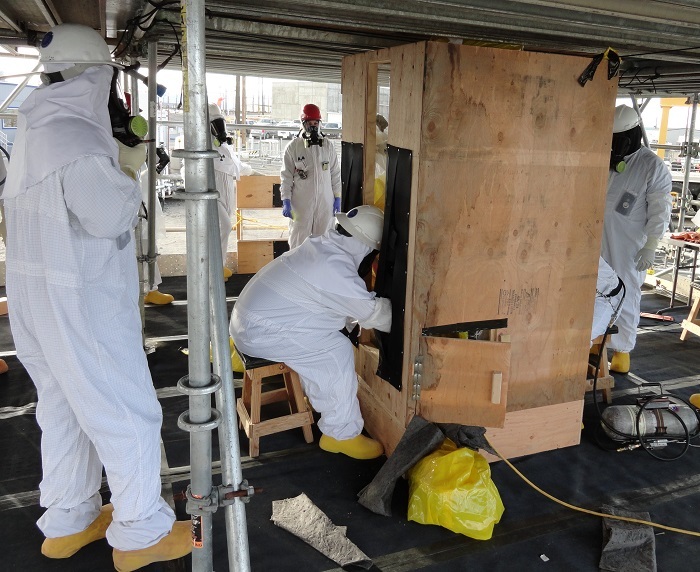 Washington River Protection Solutions workers use shielding to remove a highly contaminated thermocouple from a Hanford tank farm. Planning and mock-ups significantly reduced potential exposure risks while removing thermocouples.
RICHLAND, Wash. – EM Hanford tank operations contractor Washington River Protection Solutions is preparing to retrieve radioactive and chemical waste from storage tanks in the site’s A Tank Farm.
Removing obstructions in the tanks that would interfere with retrieval operations, such as old thermocouples, presents several hazards that can be mitigated with specialized tools, techniques, and training and the use of mock-ups.
Thermocouples are temperature-sensing devices that help Hanford technicians monitor conditions inside tanks. In addition to the radiological and industrial hazards involved in removing contaminated equipment from tanks, corrosion of the 50-foot-long thermocouples creates a risk they could break apart during removal.
Earlier this spring, workers removed damaged thermocouples used to measure waste temperatures in Tanks A-101 and A-103. In these tanks, the lower sections of the thermocouples were damaged, requiring the use of cutting and clamping techniques to safely remove them.
“Various shield designs and clamping techniques were tested during planning mock-ups, which significantly mitigated the radiation hazards,” said Christine Lobos, EM tank farm facility representative. “Our overall site cleanup strategy is to focus consistently on safety of the workforce, the public, and the environment while progressing our cleanup mission.”
To protect workers, many weeks of planning and training in mock-up conditions helped before crews retrieve the contaminated equipment from the underground tanks.
“Each tank presents its own set of challenges,” said Diego Arteaga, contractor fieldwork supervisor. “The removal of the first thermocouple at Tank A-103 required a complete design of clamps due to the deterioration. Because of the training, we knew what to do and how to do it safely.”
The workers used high-pressure spray washes on the thermocouples at Tanks A-101 and A-103 to reduce some of the radiation levels. The team then cut the thermocouples into segments and lowered the corroded lower segments to the tank floor. The remaining sections were removed from the tanks, placed in shielded containers, and shipped to Hanford’s Environmental Restoration Disposal Facility for disposal.
“Multiple layers of safety were integrated into the retrieval work on the tanks,” said Arteaga. “The team showed the value of preparation when doing dangerous work and our work paid off.”
-Contributor: Peter Bengtson
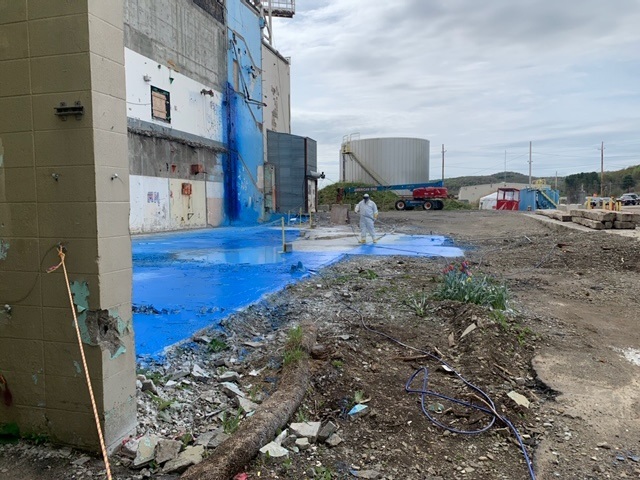 A worker at the West Valley Demonstration Project applies a fixative to the concrete slab of the former Main Plant Office Building to protect employees from potential asbestos.
WEST VALLEY, N.Y. – An EM deactivation and demolition crew at the West Valley Demonstration Project (WVDP) recently encapsulated a concrete slab with a fixative after removing asbestos from it.
The concrete slab was the foundation for the former Main Plant Office Building, which workers demolished late last year, bringing EM’s total number of structures removed at WVDP to 66.
Workers had safely removed asbestos-containing material from inside that building prior to tearing it down. Built in 1964, the three-story, 3,760-square-foot facility was part of the original commercial nuclear fuel reprocessing plant at the site.
“Our team continues to leverage their combined knowledge and expertise to safely complete the demolition, disposition, and restoration of facilities no longer needed,” EM WVDP Director Bryan Bower said. “This work will enhance safety efforts in preparation for the future demolition of the Main Plant Process Building.”
Demolition of the Main Plant Process Building is an EM priority for 2020.
The Main Plant Office Building was one of several Main Plant Process Building support structures. The next ancillary building set for demolition is a utility building. That teardown will occur after the site transitions to Phase 2 of its COVID-19 Work Resumption Plan.
-Contributor: Joseph Pillittere
 Isotek employees Shane Miles, left, and Ryan Souza stand behind a cutting tool used to help install new remote manipulators in hot cells at Oak Ridge.
Oak Ridge Office of Environmental Management (OREM) and contractor Isotek are performing the work to support EM’s highest priority project at DOE’s Oak Ridge National Laboratory — to eliminate the inventory of uranium-233. The high-dose portion of the inventory must be processed in hot cells that provide protective shielding and remote mechanical arms, known as manipulators, to handle the material. First, however, those hot cells require upgrades, including new remote manipulators. View a video explaining the upgrades here. Isotek employees Wes McCloud, Shane Miles, and Ryan Souza developed a tool to install the new hot cell manipulators.
Manipulators must be installed without anyone entering the hot cells due to contamination inside the cells. To accomplish this, the manipulators are slid through a tube on the hot cell outer wall and clamped against that wall.
The Isotek employees learned that the tube needed to be shortened because it extended beyond the wall on the inside of the hot cell. They planned to insert a circular cutting tool from the non-contaminated side of the tube to shorten it inside the hot cell.
Despite that challenge, the task became even more difficult.
“After about 30 minutes, the cutter would quit spinning,” Miles said. “If the cutter isn’t spinning, then it’s not cutting.”
Heat generated from the rapid spinning of the cutter and the friction against the tube caused part of the cutter to expand and jam itself against the interior of the tube.
The employees shaved down the expanding piece of the cutter to keep it from making contact with the tube interior and attached shock-absorbing ball bearings to it. These changes helped stabilize the cutter and reduce friction while cutting.
The hot cells are scheduled to be ready for processing high-dose canisters later this year.
-Contributor: John Gray
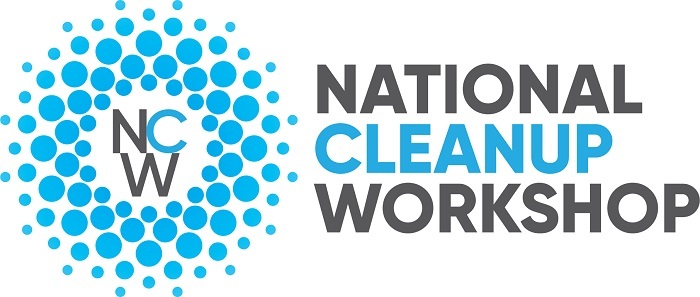 An advance agenda is now available for the 2020 National Cleanup Workshop that will bring together top Department of Energy officials as well as industry and state, tribal, and local government leaders to discuss progress and opportunities in the EM cleanup mission.
The sixth-annual workshop will be held Sept. 16-17 at the Hilton Alexandria Mark Center in Alexandria, Virginia. The workshop is hosted by the Energy Communities Alliance with the cooperation of EM and the Energy Facility Contractors Group.
Confirmed speakers so far include EM Senior Advisor William “Ike” White, EM Principal Deputy Assistant Secretary Todd Shrader, and other EM headquarters and site leaders.
Scheduled sessions will include:
- Highlighting EM Success from Across the Complex;
- Community Partnership Opportunities to Support U.S. Recovery and Growth;
- Ensuring Continued Progress at EM Sites;
- Contracting Update: End-States, Small Business and Opportunities;
- Continuing Acquisition Momentum and Improving Project Performance;
- DOE Priorities;
- Legislative Challenges and Opportunities for the EM Program;
- COVID-19: Lessons Learned from the Road to Fully Resuming Operations;
- Opportunities for Regulatory Success;
- The Path Forward for EM’s Strategic Vision
The advance agenda for the 2020 National Cleanup Workshop can be found here.
More than 800 attendees, including senior DOE executives, congressional leaders, DOE contractors, and state, tribal, and local government leaders, participated in the 2019 workshop — the largest EM-focused gathering in the D.C. area last year. More information on past workshops can be found here.
|